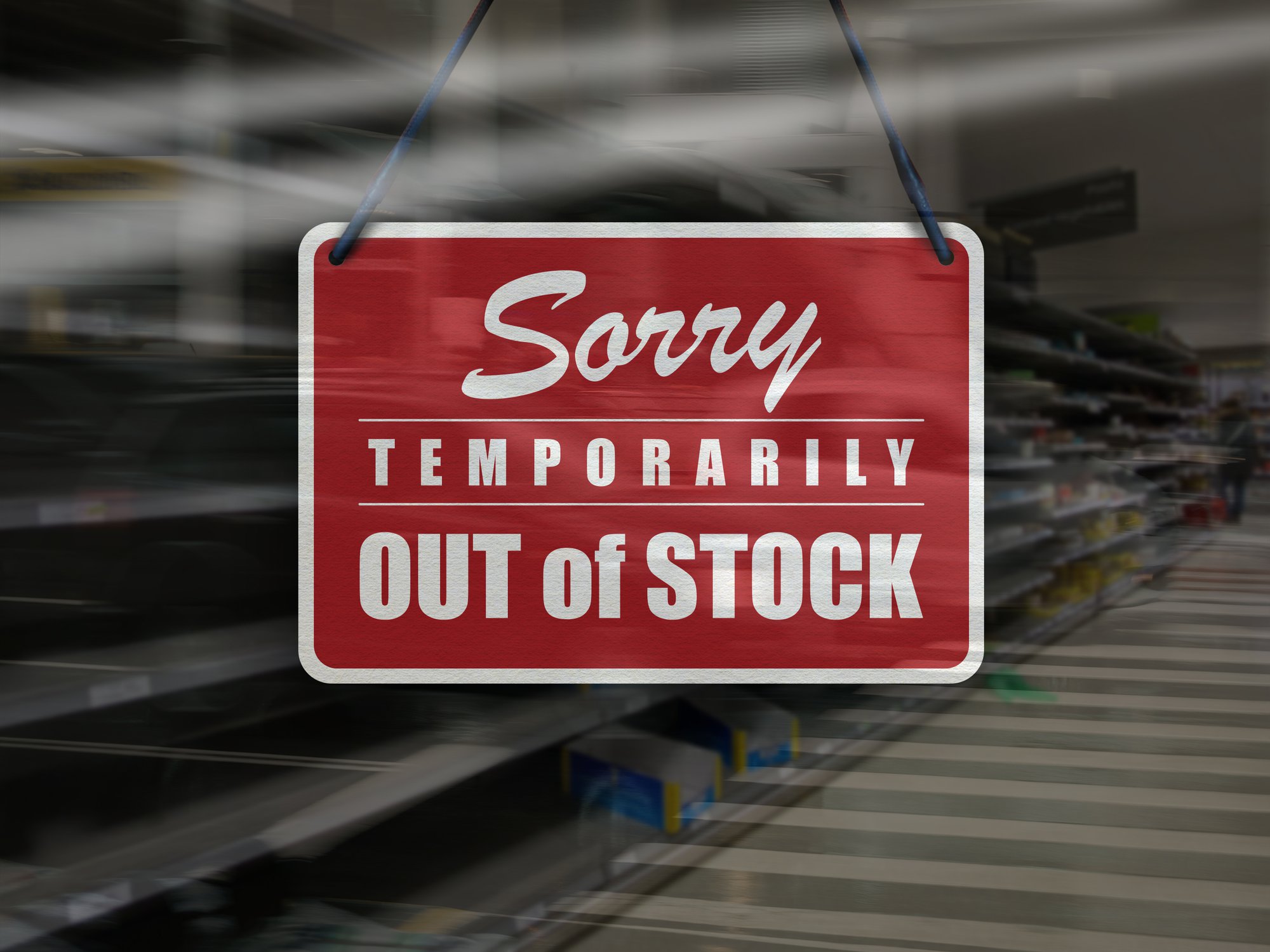Rectifying losses due to out of stock (OOS) conditions is a challenge for online retailers around the globe, with revenue dropping by 8.3% due to absent inventory. Despite this being a well-known issue in the world of e-commerce, merchandisers often still fail to mitigate the problem as quickly and effectively as they could, causing OOS issues to persist. To solve this issue, online retailers and e-merchandisers need inventory management software that can catch potential OOS problems early, reducing revenue loss and diminishing the broader impact that chronic OOS conditions can have for an e-commerce brand.
Brands need to be proactive in preventing OOS conditions because revenue decline goes beyond the loss of a single sale. It has far-reaching effects on revenue, customer loyalty, and more.
Let’s take a look at the effects OOS conditions can have on an online retailer and explore using utilizing inventory management software to mitigate the inevitable loss of revenue and customer loyalty.
The Full Impact of Out of Stock Conditions
The immediate impact of an out of stock product is obvious: a customer comes looking for a product, finds it out-of-stock, and leaves your online store without making a purchase, likely looking for that same product elsewhere. It’s a straightforward cause-and-effect scenario that on the surface seems limited to this one instance.
But it’s not just a single sale you’re losing. An out-of-stock product can have much deeper repercussions. In searching for their desired product at a competing retailer, you may lose some of your brand loyalty from the customer who searched your site only to find an out-of-stock notice.
The more products are out-of-stock, and the longer they remain so, the more this effect is compounded, leading to less customer confidence and greater customer dissatisfaction. Offering alternative products is a common way to attempt to recapture a lost sale, but when those are unsatisfactory, brand loyalty may be hurt even further.
Your margins are affected in other ways too. When a high-demand product is out of stock, you may incur higher shipping costs when getting an expedited delivery of inventory, or need additional storage space to keep up with demand. Chronic OOS conditions – when some in-demand product is never in stock – can exacerbate your loss of website traffic, and ultimately revenue down the line.

Inventory Management Software Prevents OOS Losses
Retailers around the world have tried many ways to circumvent the seemingly-inevitable OOS condition, but many of these solutions fall short of addressing the problem more completely. Smart Merchandiser’s inventory management software features help address specific facets of the OOS problem so you can keep your revenue margins where they need to be.
These three Smart Merchandiser features help you avoid not just the one-time sale loss, but also the long-term impacts of persistent OOS conditions.
Visual OOS Alerts
With Smart Merchandiser’s inventory management software, you can set stock thresholds that will trigger a visual alert for low inventory and out-of-stock products. These thresholds can be set for each individual product, depending on the popularity of the product and the time needed to restock.
When a product dips below the threshold for inventory, an orange bar will appear on the product image in the Smart Merchandiser interface, prompting the merchandiser to order more inventory, adjust the product display, or take another appropriate action.
When a product is completely out-of-stock, the visual alert will appear as a red bar, again notifying the merchandising so they can make product display decisions accordingly.
Product Display Page Automation
Of course, a merchandiser may not always be able to manually adjust the product display pages as quickly as stock changes, especially when a product is selling fast. To address this, Smart Merchandiser will automatically move out of stock items to the bottom of the page, leaving the space above-the-fold for products that can be purchased immediately.
This doesn’t completely solve the problem of OOS. If a customer is looking for a specific product and you’re out-of-stock, you’ll still lose the sale. But a customer who lands on a page only to find an assortment of out of stock products rather than anything that’s actually available will bounce to a competitor almost instantly. Keeping the out of stock products as out of sight as possible boosts your credibility as a retailer and increases the chance of impulse buys, even if a customer’s intended purchase is out of stock.
Analytical Overlay for Monitoring Sell-Through Rate
The Smart Merchandiser interface aggregates many data points and overlays them on product images, giving merchandisers a clear and detailed view of how any product is performing at any given time. The data includes KPIs like conversion rate and social media mentions, but for OOS avoidance, what matters is how the actual sell-through rate matches the planned or expected sales.
The connection between sell-through rate and OOS avoidance can be a little hard to grasp but essentially it comes down to your ability to sell products that replenish inventory at full price. Sometimes, in an effort to rectify loss from OOS, the inventory replenishment is more than the customer demand requires, leaving retailers with a lot of product that’s not selling and is taking up valuable storage space.
When this happens, retailers are often forced to put these surplus items on sale, drastically reducing the margins they would have earned if they were able to sell all the products at full-price. But by keeping track of the sell-through rate early, you can find alternative strategies for moving that inventory at full-price, without having to settle for lower margins.
Stay in Stock with Smart Merchandiser’s Inventory Management Software
OOS is a persistent problem for online retailers. It causes loss of sales and smaller profit margins due to customer dissatisfaction and loss of loyalty. As OOS conditions continue, so do the ramifications, with the potential for higher shipping costs, poor sell-through rates, and other factors that impact your bottom line.
Inventory management software like Smart Merchandiser helps mitigate these issues with low stock alerts, automated product page updates to prevent customers from attempting to buy out of stock products, and visual analytics overlays to keep track of a product’s success. By using these tools effectively, you can reduce your OOS problem and keep your margins high.



